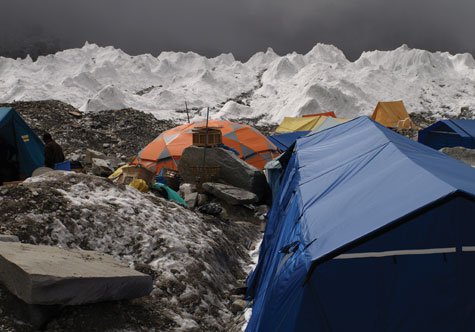Everest expedition provides clues about BP at high altitudes
BP levels increased progressively as participants climbed higher on Mount Everest.
On an expedition to Mount Everest, researchers in Italy showed for the first time that BP monitored during a 24-hour period rose progressively as people reached higher altitudes. The researchers also found that the angiotensin II receptor blocker telmisartan was not effective at very high altitude.
This marks “the first systematic demonstration that exposure to higher altitudes is associated with a progressive and marked increase in ambulatory BP. The increase occurred immediately after the high altitude was reached, persisted during prolonged altitude exposure, was seen throughout the 24-hour period but was particularly pronounced at night when there was a reduction in the nighttime ‘dip,’ and disappeared after return to sea level,” researcher Gianfranco Parati, MD, FESC, professor of cardiovascular medicine at University of Milano-Bicocca and director of the cardiology research laboratory at the Instituto Auxologico Italiano, Milan, Italy, told Cardiology Today.
A unique study
The HIGHCARE-HIMALAYA study was designed to assess changes in 24-hour BP under acute and prolonged exposure to increasing altitude and also to assess the safety and efficacy of angiotensin receptor blockade in that setting.
“We had the idea for this study from our observations in patients with limited oxygen availability, such as HF patients or patients with sleep apnea,” Parati said in an interview. “The latter, in particular, do have a BP rise, and we considered high altitude as a condition to reproduce acute hypoxia exposure without accompanying disease. A second reason for performing high-altitude studies was the wish to provide our patients asking us whether they can go safely to altitude with a reply based on experimental evidence. We chose Mount Everest because it is the highest mountain.”
For the double blind, parallel-group HIGHCARE-HIMALAYA study, the researchers randomly assigned 47 healthy, normotensive lowlanders to telmisartan 80 mg (Micardis, Boehringer Ingelheim) or placebo. Conventional and ambulatory BP were measured at baseline, at 8 weeks at sea level, at 3,400 m, upon arrival at the Mount Everest base camp at 5,400 m, at 12 days at 5,400 m, and upon return to sea level.

Base camp on Mount Everest where researchers studied changes in BP levels at different altitudes.
Image: Gianfranco Parati; printed with permission.
Higher altitude, higher BP
Exposure to higher altitude was associated with progressive increases in conventional and 24-hour BP, in plasma noradrenaline and with a suppressed renin-angiotensin-aldosterone system in both treatment groups.
In the placebo group, the progressive increase persisted after prolonged sojourn at the highest altitude, the increase was more pronounced in ambulatory BP than it was in conventional BP, the increase was particularly pronounced at night, and BP levels returned to baseline values when participants returned to sea level, according to the researchers.
Compared with placebo, the telmisartan group had reduced 24-hour systolic BP at sea level and at 3,400 m (between-group difference, 4 mm Hg), but the BP-lowering effect was not observed at 5,400 m upon arrival (–1.1 mm Hg) or at 12 days (1.9 mm Hg), Parati and colleagues found.
Implications for chronic diseases
“The BP increase seen with progressively more severe oxygen deprivation at higher altitude … may have implications for the management of patients with chronic diseases, including chronic HF (in which breathing is interrupted periodically, mainly during sleep, the so-called 'periodic breathing,') acute worsening of chronic obstructive pulmonary disease, obstructive sleep apnea and severe obesity,” Parati said.
The findings also mean that people taking an angiotensin II receptor blocker will likely maintain BP control at high altitude, but not at very high altitude, he said.
“Our findings will also enable us to take appropriate action to warn CV patients of the need for caution whenever they are going to be exposed to high altitudes for leisure or for work,” he said. – by Erik Swain
Gianfranco Parati, MD, FESC, can be reached at IRCCS Instituto Auxologico Italiano, piazza Brescia, 20-20149, Milano, Italy; email: gianfranco.parati@unimib.it.
Disclosure: The study was supported by Banca Intesa Sanpaolo SpA and Boehringer Ingelheim. Parati reports receiving honoraria for lectures from Bayer Healthcare, CVRx, Daiichi Sankyo, Menarini, Pfizer and Servier.
